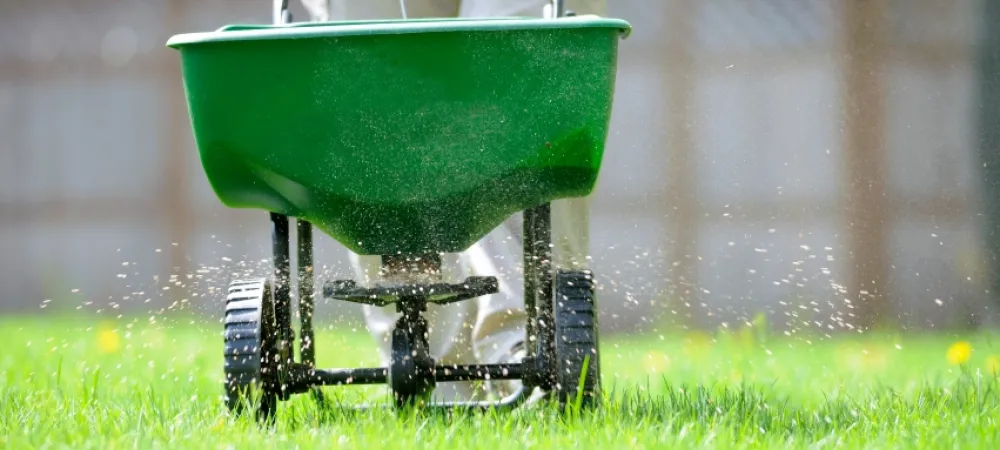
The Complete Guide to Lawn Fertilization: Timing, Types, and Benefits for a Healthy Lawn
If you've noticed your Alabama lawn looking patchy, dull, or struggling to thrive, you're dealing with a common problem that simple DIY attempts often can't fully fix. As lawn care professionals with over 16 years of experience serving Alabama homeowners, we've seen many try store-bought fertilizers and inconsistent timing, only to waste time and money without lasting results. Fertilization is essential for a healthy, green lawn, but when, how, and what to fertilize with matters deeply—especially in Alabama's unique climate. This guide will help outline everything needed for a vibrant lawn, explain fertilization options, and show why professional service from Envirogreen is often the smartest choice.
What You’re Really Looking At: Why Fertilization Matters
Proper fertilization nourishes grass roots, improves resilience to drought and pests, and promotes thick green coverage that fights weeds. Alabama’s warm-season grasses, such as Bermuda and Zoysia, have specific nutrient needs that differ from cooler-season varieties like tall fescue. Identifying your grass type helps tailor the approach. Missing or mistimed fertilization means lawns starve silently, resulting in thinning and vulnerability. Knowing what your lawn truly needs ensures that fertilization is effective—not just adding fertilizer blindly, which some homeowners mistake for proper care.
Why Alabama’s Climate Demands Expert Timing
Alabama's warm temperatures and humidity create an ideal environment for fast grass growth, but also a narrow window to fertilize effectively. Warm-season grasses respond best to fertilization starting in late March or early April, once soil temperatures reach around 70°F and the threat of frost passes. Following early spring, a second fertilization with slow-release nutrients in May and a final application in late August optimize growth through the hot summer months. Cool-season grasses, on the other hand, benefit from fertilizing in early March and again in November to prepare for dormancy. According to the Alabama Cooperative Extension System, “Fertilizing at the correct time can improve turfgrass vigor and its overall health.” Home Lawn Maintenance and seasonal timing are critical for the best results.
When DIY Fertilization Isn't Enough: Warning Signs
While applying fertilizer yourself can be tempting, watch for these signs that professional care is needed:
- Persistent brown patches despite treatment
- Patchy or inconsistent lawn color
- Weeds are overtaking the thinning grass areas
- Soil compaction signs or poor drainage
- Uneven growth after fertilization efforts
- Recurring pest damage despite home treatments
These issues suggest deeper soil or nutrient imbalances best diagnosed by a pro. Often, DIY on these becomes costly in time and damage.
Organic vs. Synthetic Fertilizers: What Fits Your Lawn?
Choosing between organic and synthetic fertilizers hinges on your lawn goals and patience level. Synthetic fertilizers provide nutrients immediately available to the grass roots, but can risk burning if overused and may contribute to environmental runoff. Organic fertilizers release nutrients slowly as they break down, improving soil structure and microbial health, though they may be costlier and slower acting. The University of Georgia Extension notes, "Organic fertilizers add organic matter to the soil and improve its water retention and microbial activity, while synthetic fertilizers supply nutrients in a form readily available to plants". Many lawn care professionals recommend integrating both types based on soil testing results.
The Professional Approach: Why It Works
At Envirogreen, our fertilization service follows a proven four-step process:
- Soil Testing and Analysis – We start by identifying your lawn’s unique nutrient needs through precise soil testing.
- Customized Fertilizer Selection – We recommend the optimal fertilizer type and formula tailored to your grass variety and the Alabama climate.
- Precise Timing and Application – Fertilizer is applied during optimal growth phases using calibrated equipment for even coverage.
- Follow-up and Maintenance Recommendations – We monitor progress and provide ongoing care advice to sustain lawn health.
This comprehensive method targets root causes, not just symptoms, ensuring long-lasting and vibrant results. When you call our team, we don't just treat the symptoms—we solve the underlying problem.
The Real Cost: Why Professional Service Pays
While DIY may seem cheaper upfront, hidden costs accumulate quickly:
- Equipment purchase and maintenance
- Buying incorrect fertilizer formulas
- Time lost correcting mistakes or reapplying
- Repairing lawn damage caused by improper care
- Environmental impact of runoff and improper application
The U.S. Environmental Protection Agency emphasizes, “Proper lawn fertilization and maintenance minimize environmental risks and improve lawn quality, which are difficult to achieve with untrained DIY efforts”. Professional care often lowers actual costs and environmental impact, making it a wise investment.
Ready to Get Your Alabama Lawn Looking Its Best?
Regular professional fertilization builds long-term lawn resilience, improves curb appeal, and protects property value. Healthy turf reduces weed and pest problems, lowers watering needs, and enhances overall lawn vitality. After treating thousands of Alabama lawns, Envirogreen offers a fertilization service that outperforms DIY efforts in both effectiveness and convenience. Our scientific approach saves time and money, restoring your lawn’s health so you can enjoy a lush, green yard.
Don't wait until patchy grass turns into a full lawn loss. Contact Envirogreen today to schedule your professional fertilization service and enjoy a healthy lawn all season long.
Sources:
- Alabama Cooperative Extension System. "Home Lawn Maintenance." Alabama Cooperative Extension System, 10 July 2025, https://www.aces.edu/blog/topics/lawn-garden/home-lawn-maintenance/.
- University of Georgia Cooperative Extension. "Fertilizing the Home Garden." University of Georgia Cooperative Extension, 13 Aug. 2025, https://fieldcrop.caes.uga.edu/publications/C1179/fertilizing-the-home-garden/.
- United States Environmental Protection Agency. "What You Can Do: In Your Yard." EPA, 17 Nov. 2024, https://www.epa.gov/nutrientpollution/what-you-can-do-your-yard.
- LawnStarter. "Alabama Lawn Care Schedule." LawnStarter, 30 Nov. 2024, https://www.lawnstarter.com/blog/al/alabama-lawn-care-schedule/.
